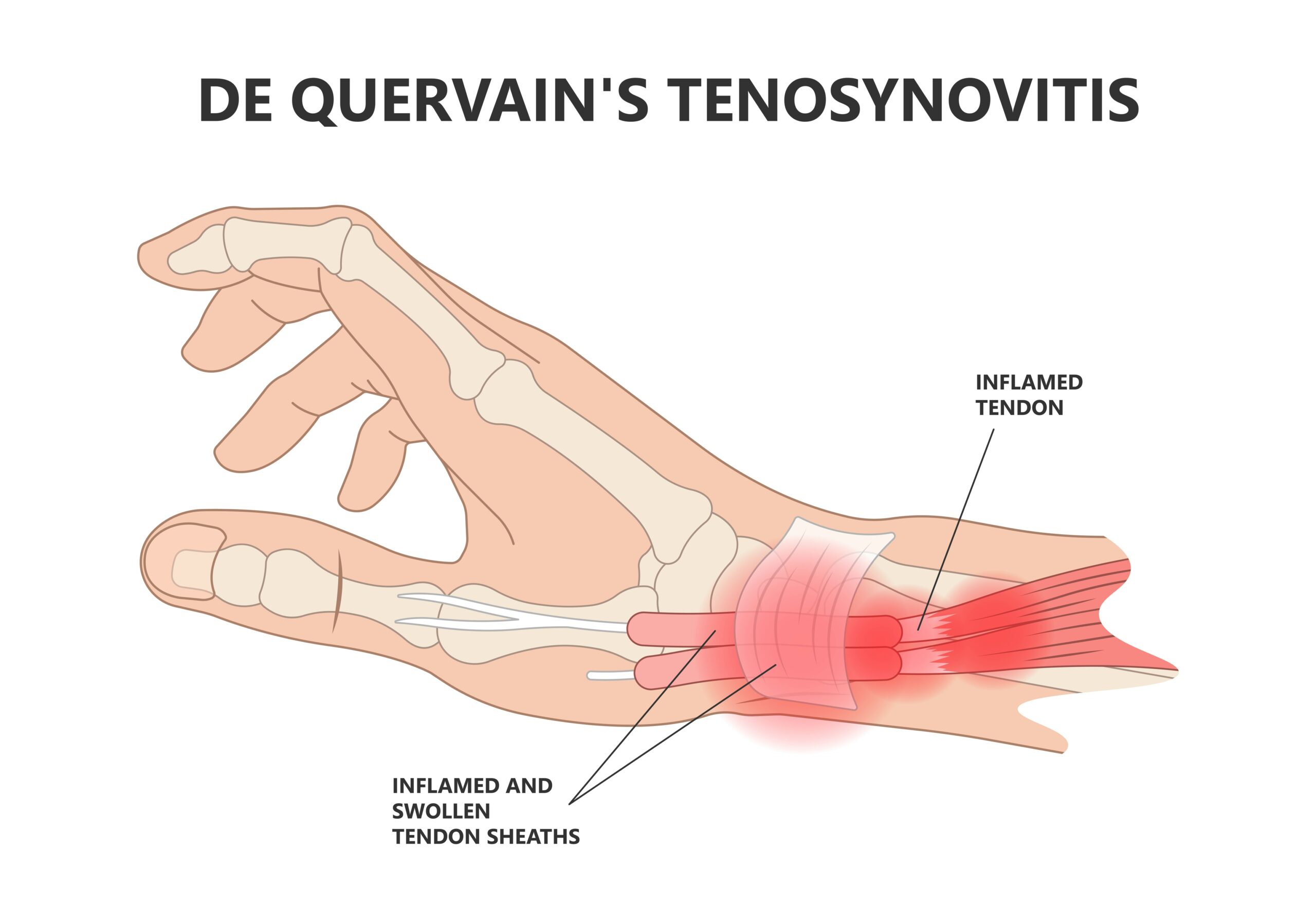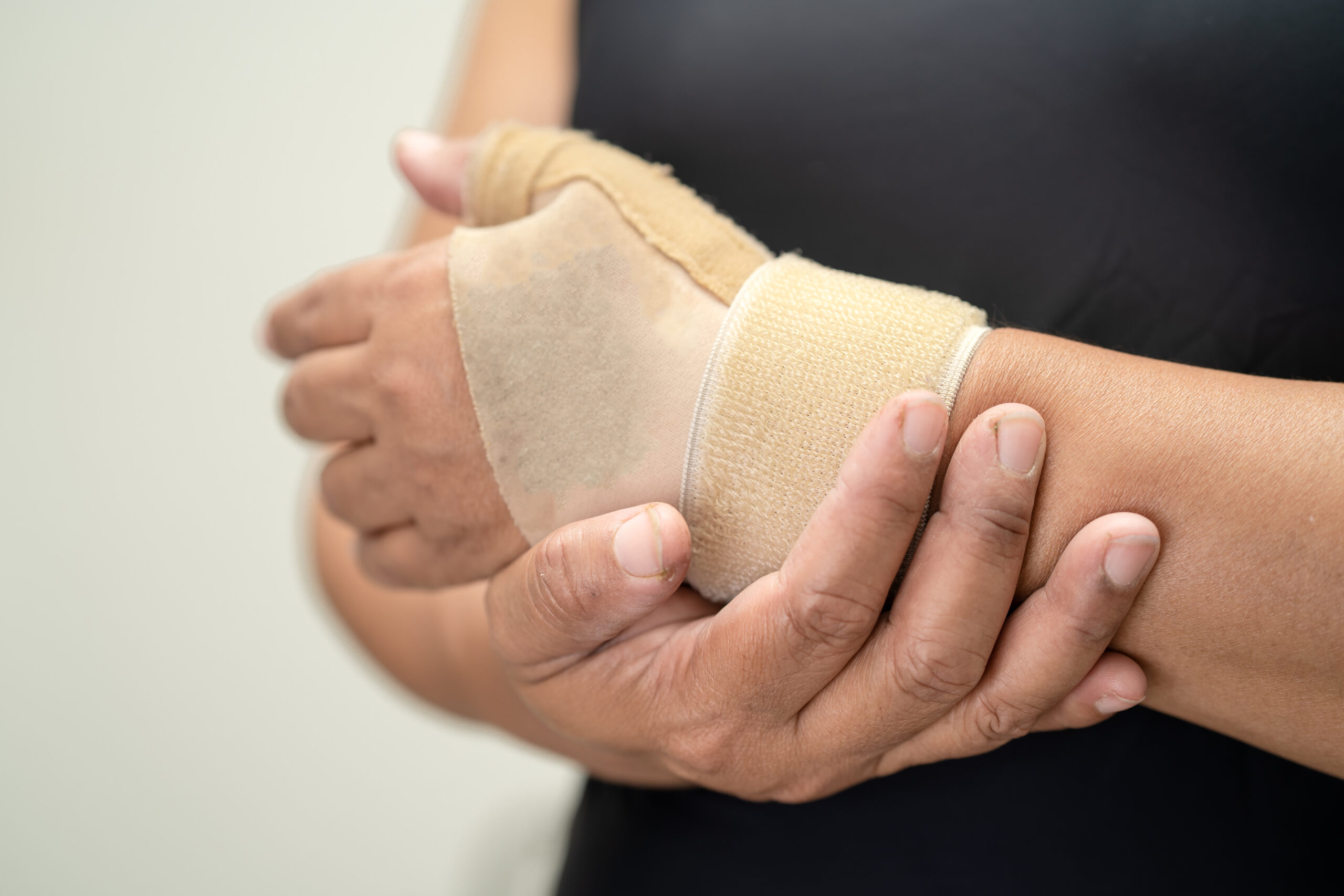
Early intervention is key in treating De Quervain Tenosynovitis
De Quervain’s Tenosynovitis or Syndrome is a type of repetitive strain injury (RSI). It is one of the most common disorders treated by hand surgeons and physicians.
In this article, we delve into the causes, symptoms and risk factors associated with the condition.
De Quervain’s Tenosynovitis is also known by the popular names of designer’s thumb, gamer’s thumb, mummy’s thumb, mother’s wrist, new mum’s syndrome, or texting thumb, due to the incidence in those populations.
De Quervain’s occurs as a result of repetitive friction in the first extensor compartment of the wrist, where the Abductor Pollicis Longus (APL) and the Extensor Pollicis Brevis (EPB) tendons lie. This disorder specifically affects the sheath that encases these tendons; the sheath becomes inflamed and constricted, leading to pain.
De Quervain’s is characterised by pain along the thumb side of the wrist, swelling around the base of the thumb, reduced motion of the thumb and wrist (e.g. during gripping, making a fist, and bending the wrist) and a ‘catching’ sensation when moving the thumb.
Risk factors
- Females are at higher risk of developing De Quervain’s (at a possible rate of 3 to 10x more than males)
- Anatomical variations of the wrist compartment
- A history of repetitive, forceful, and ergonomically stressful work using the hands and wrists has been suggested as a cause, but a link has not yet been established
De Quervain’s Tenosynovitis is often diagnosed with a comprehensive patient history, specific manual muscle testing and orthopaedic tests such as the Finkelstein test which accurately reproduces the pain.
Injury management
Early intervention is key with this injury, especially when it affects workers in highly repetitive jobs. Aggravation of the condition is very common, which can prolong the recovery time.
Conservative management of De Quervain’s involves:
- Activity Modification. Patients should reduce or avoid activities or movements that will exacerbate the symptoms. Workplace Health Providers might recommend a splint or brace.
- Ice therapy. Ice can help reduce inflammation and relieve pain
- Medication. Patients can use anti-inflammatories to reduce swelling.
- Physiotherapy/manual therapy. Gentle soft tissue work, stretching and graded strengthening to improve circulation and reduce stiffness
If conservative management fails, the treating practitioner might consider other options, such as:
- Corticosteroid injections to reduce inflammation
- Surgery to release the tendon sheath (rarely required)
If workers are affected by De Quervain’s, early assessment and management will limit the progression and aggravation of the injury, reducing the impact on an individual’s ability to go about their day-to-day activities and perform their job without pain.
Case Study
A meatworks worker presented with pain and swelling on the side of his wrist and difficulty moving his thumb or making a sustained fist. He currently works as a lamb shoulder boner, which involves repetitive wrist and hand movements when using the knife. The workplace Health Provider onsite saw him and promptly diagnosed him with De-Quervains Tenosynovitis.
The worker noted that his knife had blunted, which meant he needed to use an increased grip on the knife to sustain the cutting motions through the meat.
The worker reported the pain to his supervisor within a day of the onset of his symptoms. The worker was then able to receive an assessment and treatment that same day.
The worker received gentle stretching, soft tissue work and taping to the affected wrist. The taping reduced any excessive motion and stabilised the wrist and hand motion. The worker was then placed on light duties, which only required using his unaffected hand. The worker was also advised to minimise exposure to aggravating movements at home (gripping, grasping and pinching), use Nonsteroidal anti-inflammatory drugs (NSAIDs), and apply ice to the affected area at home.
After the swelling and pain had subsided, the worker was then able to perform self-stretching and strengthening exercises at home.
Within two weeks, the worker returned to their normal duties pain-free due to early intervention and management that had occurred. The worker now understands the importance of preventative measures for his role, including maintaining a sharp knife, not gripping their knife harshly and taking regular breaks when working.
Sign up to our monthly enewsletter
"*" indicates required fields


